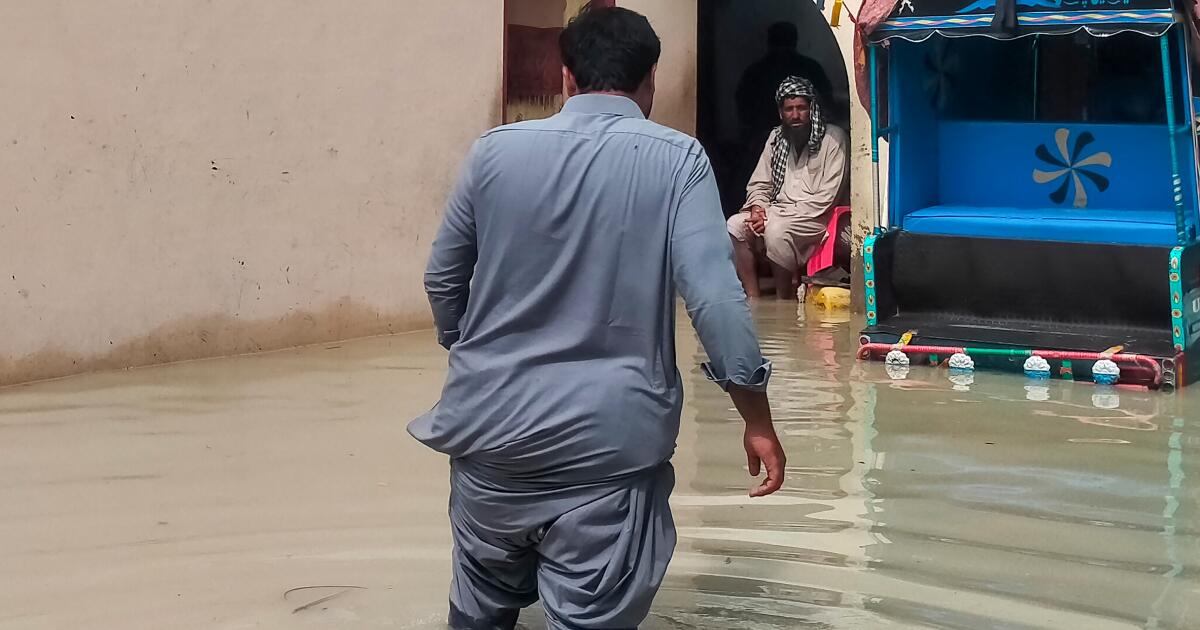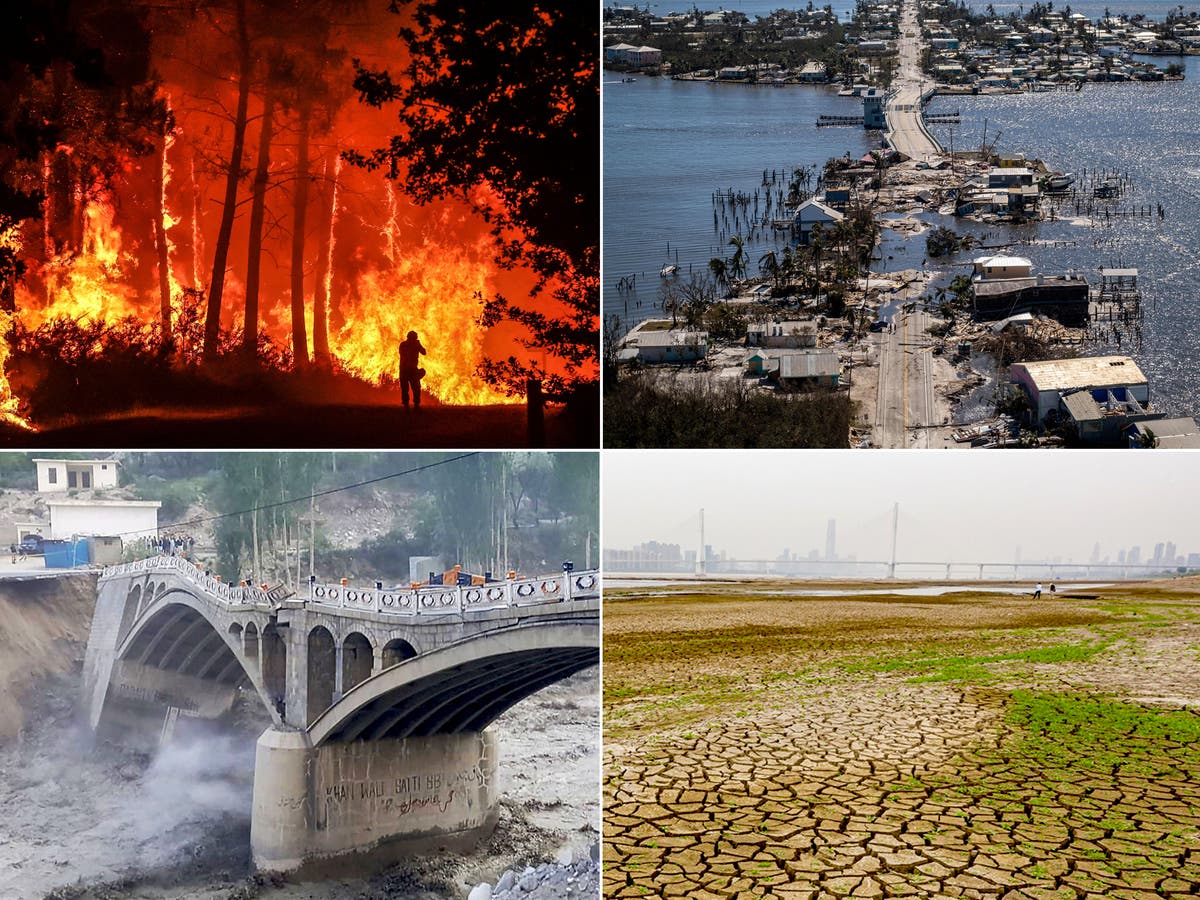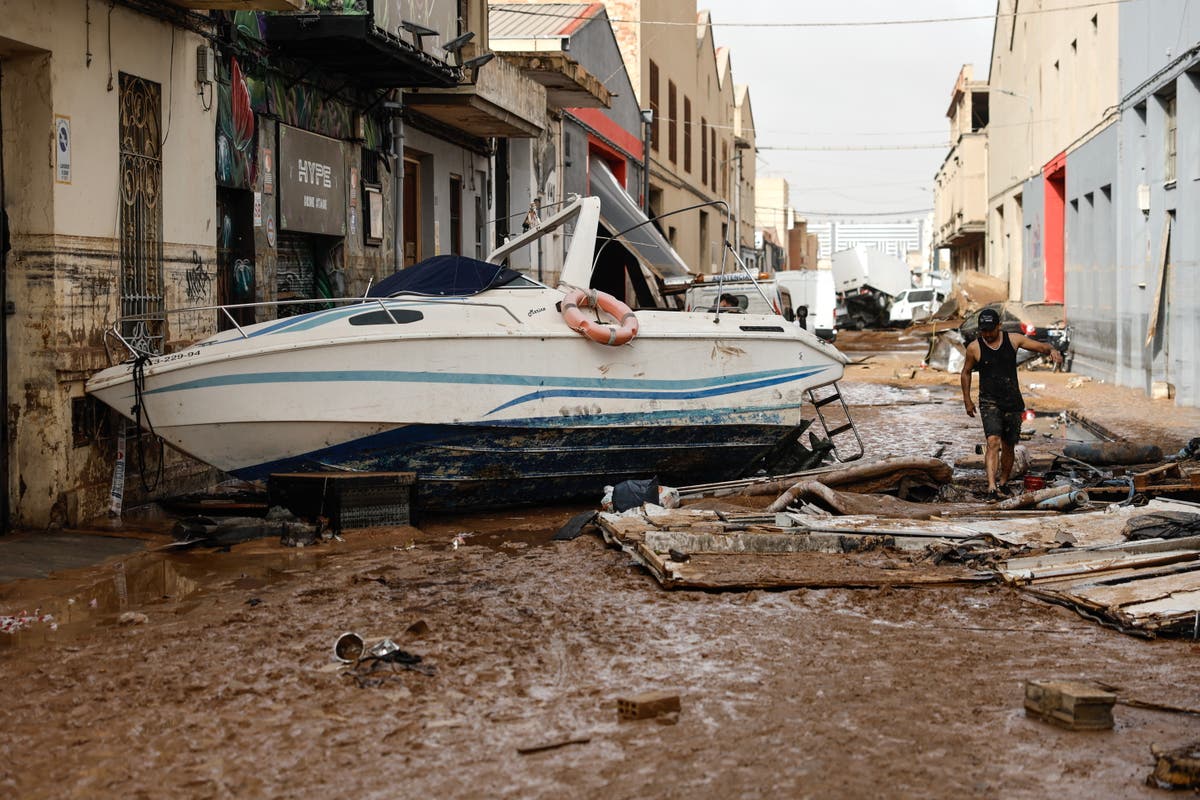
Scientists confirm climate change played a role in Pakistan floods
The IndependentSign up to the Independent Climate email for the latest advice on saving the planet Get our free Climate email Get our free Climate email SIGN UP I would like to be emailed about offers, events and updates from The Independent. The excessive rainfall and flooding this year was widely dubbed as a climate catastrophe with UN chief Antonio Guterres describing the devastation as “climate carnage” and Pakistan’s government holding rich countries responsible for the havoc. “The same event would probably have been much less likely in a world without human-induced greenhouse gas emissions, meaning climate change likely made the extreme rainfall more probable,” it said. And our own analysis also shows clearly that further warming will make these heavy rainfall episodes even more intense.” She added: “While it is hard to put a precise figure to the contribution of climate change, the fingerprints of global warming are evident.” open image in gallery This combination of handout satellite pictures courtesy of Maxar Technologies shows an overview of a village and fields in Rajanpur, Pakistan, prior to flooding and after major flooding occurred The intensity of rainfall in the region is driven by several weather patterns, such as the La Niña event and the arrival of multiple depressions from the Bay of Bengal, something that makes Pakistan highly prone to heavy rainfall. “Pakistan must also ask developed countries to take responsibility and provide adaptation plus loss and damage support to the countries and populations bearing the brunt of climate change.” However, despite increasing evidence of climate crisis making extreme weather more frequent, the issue remains a contentious point and it is yet to be seen how the upcoming UN climate summit, Cop27, would be able to bring any consensus.
History of this topic

India, Pakistan share climate challenges but not solutions
Deccan Chronicle
Climate change worsened deadly Africa floods, scientists say
Raw StoryPakistan hasn’t learned lessons from 2022 deadly floods, experts say
Associated PressHeavy rains hit Pakistan’s south as this monsoon’s death toll rises to 209
Associated PressDeath toll rises to 156 as weeks of heavy monsoon rains wreak havoc in Pakistan
Associated PressPakistan’s cultural capital sees record rainfall, flooding streets and affecting daily life
Associated PressUnusually heavy monsoon rains in Pakistan will affect 200,000 people, a top UN official warns
Associated PressPakistan records its wettest April since 1961 with above average rainfall
Associated Press
Pakistan records ‘wettest April’ in more than 60 years
Al Jazeera
Pakistan province issues flood alert; warns of heavy loss of life from glacial melting
Hindustan Times
Pakistani province issues flood alert and warns of heavy loss of life due to glacial melting
The Independent
Pakistan: 87 killed over past week as heavy rains wreak havoc in country, over 80 injured
India TV NewsDeath toll from 4 days of rains rises to 63 in Pakistan with more rain on the forecast
Associated Press
Pakistan rain mayhem continues even on fourth day, 63 killed and over hundred missing
India TV News
Lightning, rains kill many in Pakistan as authorities declare a state of emergency in the southwest
The Hindu
Heavy winter rains in Pakistan kill at least 37 people, collapse buildings and trigger landslides
The Hindu
Pakistan winter rains cause landslides, leaving at least 36 dead, 50 injured
Live Mint
At least 29 killed after buildings collapse, landslides struck Pakistan amid winter rains
Hindustan Times
Heavy rains in Pakistan kill at least 29 as buildings collapse and landslides block roads
LA Times
At least 35 killed as Pakistan rains collapse buildings, trigger landslides
Al JazeeraPakistani leader calls for global unity to fight diseases and emergencies caused by climate change
Associated Press
Over a year after Pakistan floods, survivors battle climate anxiety
Al JazeeraCLIMATE GLIMPSE: Here’s what you need to see and know today
Associated Press
Flood feud: The Hindu Editorial on lessons from the floods in North India
The Hindu
Heavy monsoon rains in Pakistan kill at least 50 in two weeks
Al JazeeraHeavy monsoon rains return to Pakistan a year after deadly floods
Associated PressAfter devastating floods in Pakistan, some have recovered but many are struggling a year later
Associated PressAtmospheric rivers caused 70% of India's floods between 1985 and 2020: Study
The Hindu
No respite for Pakistan! 14 killed as incessant rain sweeps away tourist vehicle in occupied Kashmir
India TV News
The fall and fall of Pakistan
New Indian Express
50 lakh people in India, Pakistan vulnerable to deadly glacial floods due to climate crisis
India Today
Life in crisis-hit Pakistan as inflation edges to 48-year high
Hindustan Times
Cities ablaze and countries submerged: The worst climate disasters of 2022
The Independent
Pakistan get $9 billion in donation for flood recovery
India Today
Donors offer over $9B for Pakistan after devastating floods
Associated Press
UN gathering seeks aid for Pakistan after devastating floods
The Independent
Donors pledge more than $9bn for Pakistan flood recovery
Al Jazeera
Pakistan seeks help with $16 billion flood rebuilding at UN conference
India Today)
Pakistan PM Shehbaz Sharif urges international community to help flood victims
Firstpost)
Pakistan needs more than $16 billion for flood recovery: UN
Firstpost
Eight million may still be exposed to Pakistan floodwaters: UN
Al Jazeera)
COP27 to deal with loss and damage: What does this mean for poor nations? What does compensation look like?
Firstpost
Photos: Pakistan’s fishers submerged in ‘climate anxiety’
Al Jazeera
Economic woes, shifting ties complicate Pakistan’s flood recovery
Al Jazeera
Pakistan: World Bank estimates floods caused $40B in damages
Associated Press
After four-year break, Malala Yousafzai arrives in Pakistan to meet flood-hit victims
India TV News
How Pakistan can prevent another flood disaster
Al JazeeraCalls for climate compensation grow after Pakistan's floods destroy homes, infrastructure
ABC
Drive for climate compensation grows after Pakistan’s floods
Associated Press
Drive for climate compensation grows after Pakistan's floods
The IndependentDiscover Related




























)















